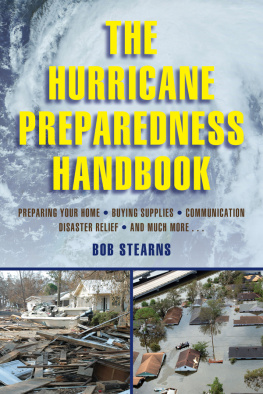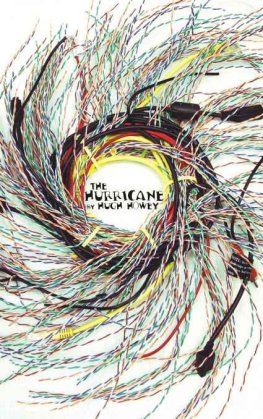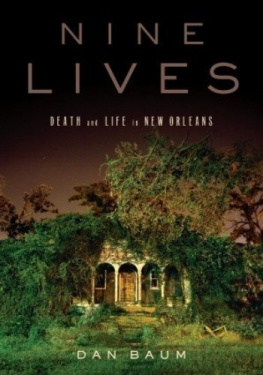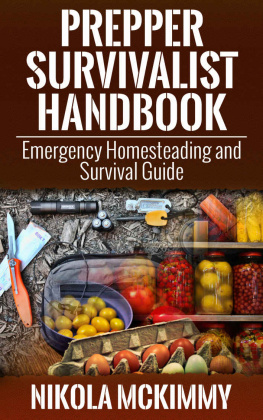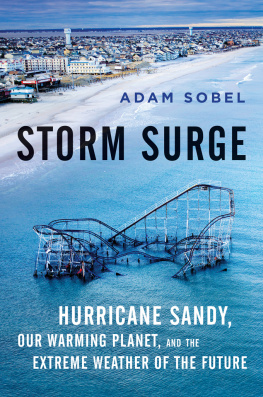Copyright 2009, 2015 by Bob Stearns
All rights reserved. No part of this book may be reproduced in any manner without the express written consent of the publisher, except in the case of brief excerpts in critical reviews or articles. All inquiries should be addressed to Skyhorse Publishing, 307 West 36th Street, 11th Floor, New York, NY 10018.
Skyhorse Publishing books may be purchased in bulk at special discounts for sales promotion, corporate gifts, fund-raising, or educational purposes. Special editions can also be created to specifications. For details, contact the Special Sales Department, Skyhorse Publishing, 307 West 36th Street, 11th Floor, New York, NY 10018 or .
Skyhorse and Skyhorse Publishing are registered trademarks of Skyhorse Publishing, Inc., a Delaware corporation.
Visit our website at www.skyhorsepublishing.com.
10 9 8 7 6 5 4 3 2 1
Library of Congress Cataloging-in-Publication Data is available on file.
Cover design by Jane Sheppard
Cover satellite image of Hurricane Rita by NASA
Cover photographs, bottom: FEMA News Photo
Print ISBN: 978-1-63220-275-8
Ebook ISBN: 978-1-63220-941-2
Printed in China
Contents
Why you need to prepare
Understand basic storm dynamics
The category system for determining potential for damage
How forecasts are made
Exactly what they mean to you
Storm surge, flooding, and other hazards
Supplies you should have on hand
How to make the right decision
You can do a lot to reduce damage
Ways to mitigate the high cost
Choosing and using the right backup system
Prepare to deal with the inevitable
Staying in touch with the world around you: myths and misconceptions
Provisioning for the long haul
Sorting things out after the storm
Cleanup, security, and scam artists
Agencies to which you can turn
Foreword
I experienced my first hurricane at age nine on August 1, 1944, in Wilmington, North Carolina. It was a nameless Category 1 with 90-mile-per-hour winds, not really very much of a storm by the yardstick of severe hurricanes that have occurred over the last two decades, but it nevertheless served at once both to frighten and fascinate me. A continuing interest in weather eventually led to my obtaining a degree in meteorology in 1958, and then serving as a navy weather officer for the six years that followed. I spent my last three years on active duty forecasting hurricanes for the navy. This included working, and occasionally flying with, the Navy Hurricane Hunters, an aircraft weather reconnaissance squadron stationed in Puerto Rico for the purpose of monitoring tropical storm activity in the Atlantic basin. Military hurricane reconnaissance has since been reassigned to the Air Force.
After leaving the navy in 1964 I spent the next four years as a research associate on a hurricane research project with the University of Miamis Rosenstiel School of Marine and Atmospheric Sciences. I spent a lot of time flying into a great many hurricanes with the National Oceanic and Atmospheric Administration (NOAA) Research Flight Facility as part of that project.
However, flying inside a hurricane in an airplane designed for that purpose and going through the same storm on the ground are vastly different experiences. Once the aircraft has completed its mission it can then leave the storm with its turbulent ride many miles behind and quickly retreat to a quiet location. But when the storm comes to you and youre confined to a house, you have no choice but to hang on and hope that you will survive the long ordeal that lies ahead. I continue to find this prospect far more terrifying than bouncing around in an airplane for a few hours!
The purpose book is therefore twofold: (1) To provide some insight and understanding about how these monster storms work, and (2) to provide you with the knowledge that will help you make the necessary preparations to ensure the safety and survival of yourself and your family, as well as to reduce damage to your property as much as possible.
Bob Stearns
Jupiter, Florida

CHAPTER 1
The Nature of the Beast
If you live within 100 miles of the Atlantic or Gulf of Mexico coast, you are very much at risk when a major hurricane comes ashore in your area. The closer to the coast, the greater the risk. But if you understand what hurricanes are, how the warning system works, and how to prepare for them, your odds of survival increase enormously. The same goes for your ability to protect your property.
Ever since modern man evolved on this planet, severe hurricanes have proved over and over again to be the single most catastrophic event nature has thus far sent our way. They are worse than tornadoes (which can be stronger but are far smaller and much more short-lived); even worse than tidal waves (tsunamis), earthquakes, or volcanic eruptionsat least those we have experienced since the beginning of recorded history. It doesnt matter whether you call them hurricanes, typhoons, or tropical cyclones, over the course of history these huge, extremely violent windstorms have caused more human deaths and more widespread damage than almost all other natural disasters combined.
Some terrifying examples: As recently as November 13, 1970, an extremely severe tropical cyclone slammed into the lowlands of East Pakistan (now known as Bangladesh), killing at least 500,000 people. Some unverified estimates raise the number to almost one million. A storm on October 7, 1737, did the same in Bengal, India, causing more than 300,000 human deaths. And yet another 300,000 or more unfortunates were also killed in Hiapong, Vietnam, in 1881.

Damage in Mississippi by Hurricane Katrina in 2005. FEMA photo by Marty Bahamonde.
Why did so many die in these storms? Lack of sufficient warning is undoubtedly the single most significant factor. In situations like these, geography can also be a major contributing feature: low-lying shorelines with an extremely high human population density (still true today around the Bay of Bengal) are exceedingly vulnerable to storm surges, which have been recorded even in modern times to exceed 20 feet and reach many, many miles inland. During and after a major hurricane, water (flooding and storm surge) kills far more people and causes far more damage than the strongest winds. Hurricane Katrina (2005) in New Orleans is a prime example of the terrible delayed flood damage that can follow a major hurricane.
Even in recent times there have been storms with fatalities totaling in the many thousands. Hurricane Mitch hit Honduras in October 1998, a Category 5 with 165 mph winds, officially leaving at least 9,086 dead in its wake. But the true total from that catastrophe, by some estimates more than 20,000, will likely never be known because of the remoteness of the region and lack of an accurate census.
In 2005, Hurricane Wilma, a Category 5 storm with maximum winds of 185 mph and a minimum central pressure of 882 millibars (a new record for Atlantic hurricanes), slammed into Mexicos Yucatan Peninsula, almost a direct hit on the resort city of Cancun, before moving on to cross South Florida as a Category 3 with 125 mph winds several days later. The total damage in the United States was more than $20 billion, yet only 22 U.S. deaths were attributed to Wilma. Everyone knew it was coming almost a week before it arrived and had plenty of time to prepare.

